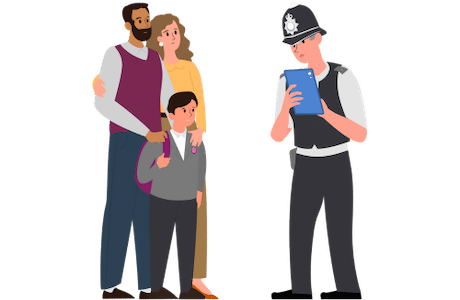While it has been over three years since the World Health Organisation (WHO) declared the coronavirus outbreak a global pandemic, the impact and effects of the pandemic on children’s social, emotional and mental wellbeing are still being felt today.
In a recent survey conducted by the National Governance Association (NGA), amid growing disquiet over child welfare since the beginning of the pandemic, more than half of boards, trustees and academy committee members reported a rise in safeguarding concerns. Neglect, abuse and bullying were the top three issues highlighted in the report—with respondents also stating that “there is a high rate of students self-harming”, and that self-harm and other mental health concerns are “the largest and most growing concern by far”.
Speaking about the recent findings from the survey, the director of policy and communications at the NGA stated: “The “aftershocks” from the pandemic are continuing to affect schools in 2023. While three years ago we grappled with the unprecedented tribulations of a global pandemic, only a naïve observer would suggest that these pressures now only reside in the history books.”
Research on the long-term impacts of the pandemic on children’s wellbeing
According to Children and Young People Now’s Special Report: Speech, Language and Communication Needs, the number of children experiencing speech and language difficulties as a result of the disruption caused by the pandemic is increasing. Around 7% of reception-age children have a speech and language difficulty and 1.7 million pre-school children were behind with talking and understanding words last year.
The research also revealed that the disruption to education caused by the COVID-19 pandemic increased this problem as the proportion of young children classed as not achieving a good level of development at the age of five has risen over the past three years.
A recent survey by the Institute of Fiscal Studies (IFS) revealed that children aged four to seven were 10% more likely to have seen their social and emotional development worsen than 12 to 15-year-olds. One headteacher recently revealed that after an extended period away from school during the pandemic, some children returned to school having forgotten how to write.
The Local Government Association reported that the prolonged stress and uncertainty caused by the pandemic contributed to increased anxiety, depression and even post-traumatic stress disorders among children, most of whom are now back in full-time education.
The safeguarding role of schools, educational settings and local authorities
These statistics highlight the severity of the long-term impact of the pandemic on children’s wellbeing and serve as a reminder that schools, educational settings and local authorities have an important role to play in the wider safeguarding system of children. Crucially, this includes identifying concerns around the health and wellbeing of children, securely sharing information and taking prompt action to ensure that each child’s best interests are always considered.
It is therefore crucial that schools, colleges, multi-academy trusts and other educational settings, as well as departments across local authorities, ensure that they have the right safeguarding systems in place to spot, record and address any signs of concern relating to children’s safeguarding or wellbeing. Identifying and sharing early signs of any safeguarding concerns, no matter how small, is vital to ensure young people can access the support they need, when they need it, to support their wellbeing.
How CPOMS can help
COVID-19 undoubtedly transformed the educational landscape; disruptions to routines, the limiting of social interactions and the ongoing absence of in-person learning all created several challenges for children, whose social and emotional development has been, and is continuing to be, impacted in the long-term.
Safeguarding software solutions from CPOMS not only helps with aiding effective collaboration, but it also provides schools and safeguarding leads with the information they need to make data-driven decisions and ensure the safety of a child, as well as helping to create a secure and nurturing environment for all children.
With CPOMS Safeguarding software, all staff can securely document and monitor any changes in the behaviour and wellbeing of students. Authorised staff can then use this information to spot trends more easily which in turn enables early intervention, quick action and helps to identify any additional need for support.
Each setting can also create customised categories relating to a student’s academic progress or observations about their emotional state, such as “language and writing skills” or “interaction with others” to accurately log different types of wellbeing concerns and recognise any early indicators of more potentially serious safeguarding-related issues.
To find out more about how CPOMS can help your setting, get in touch with our team today.




